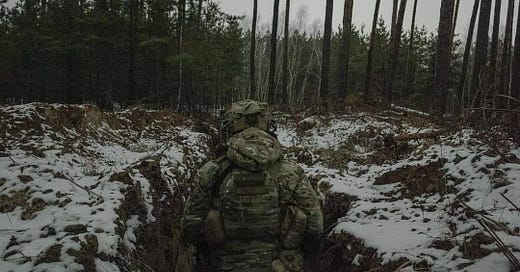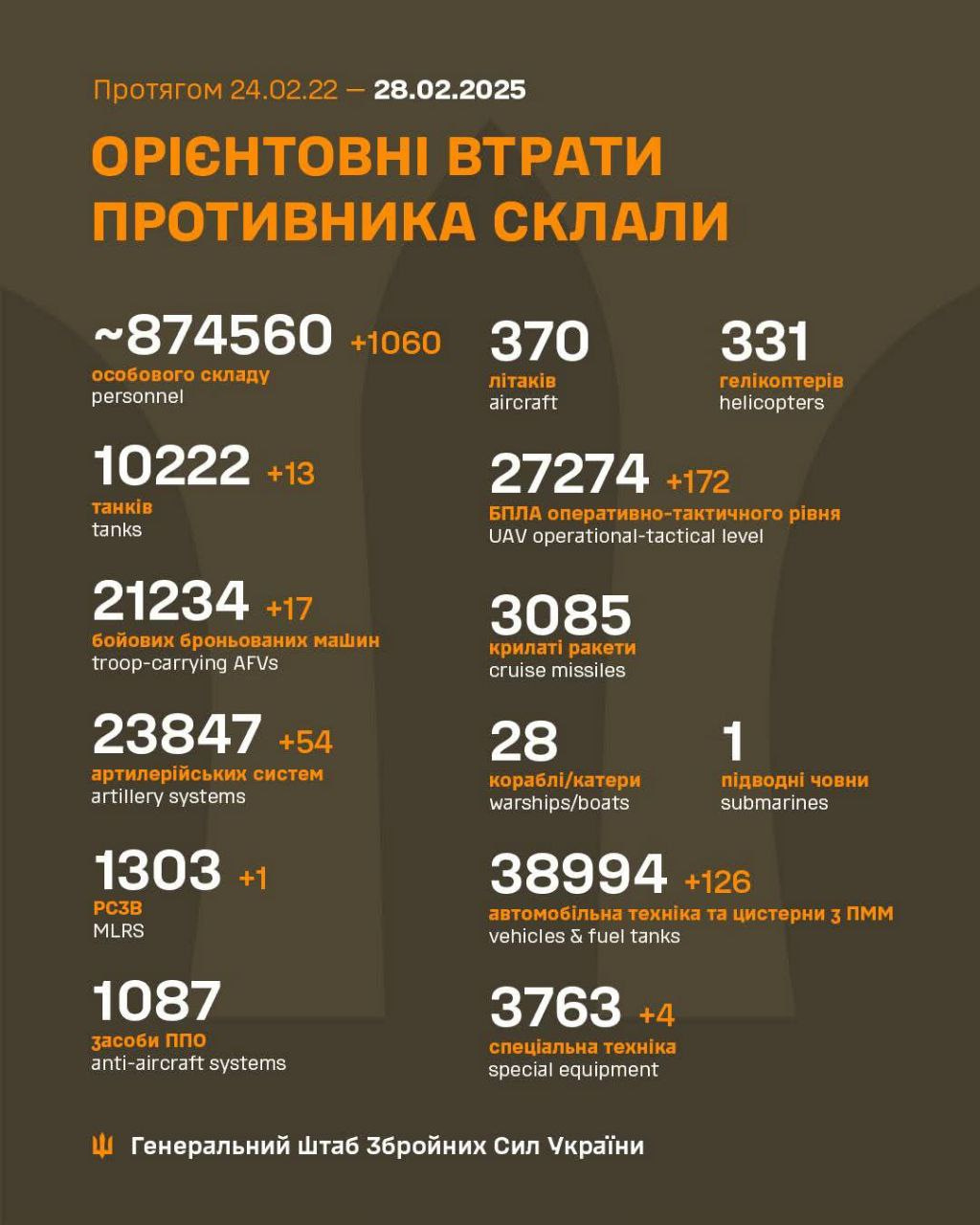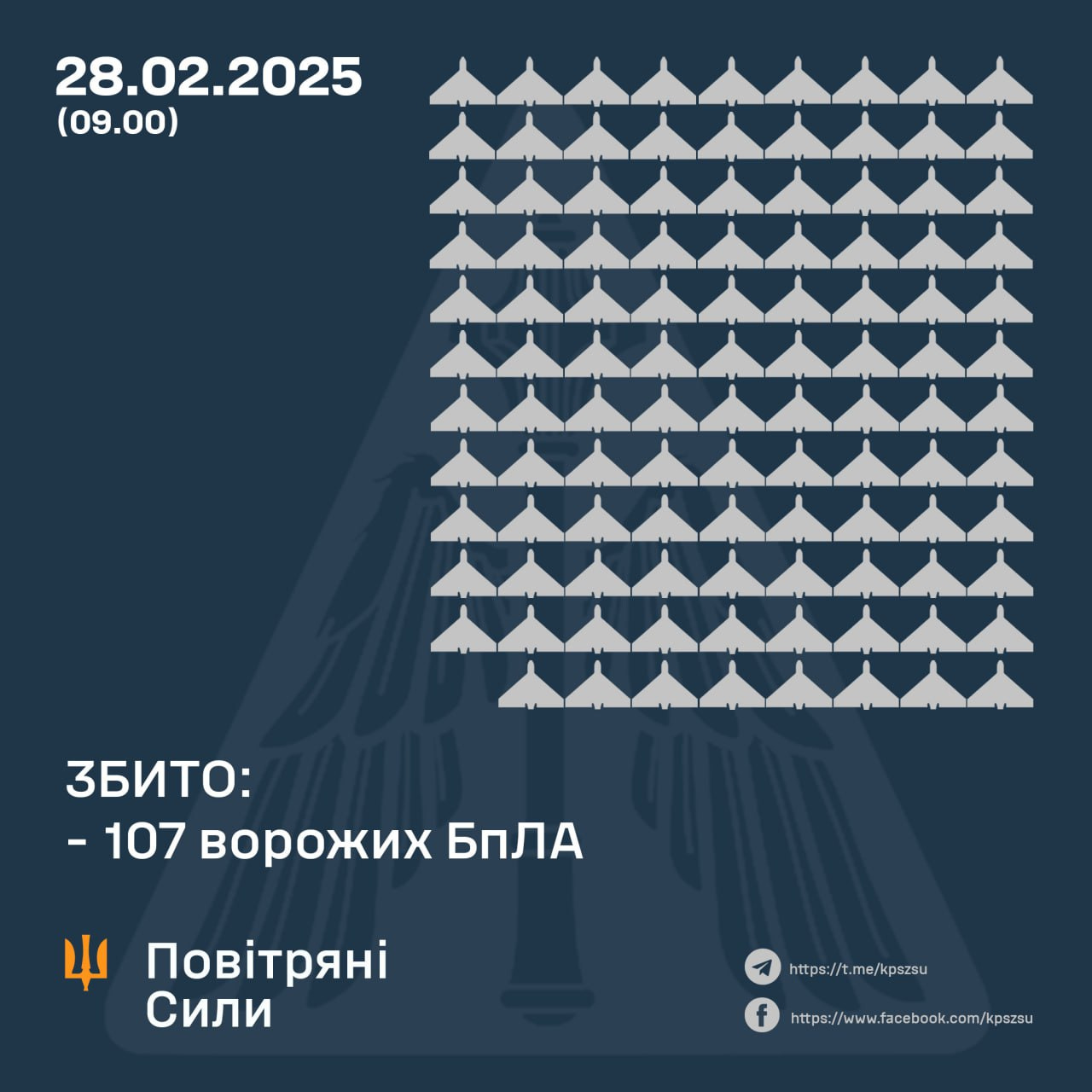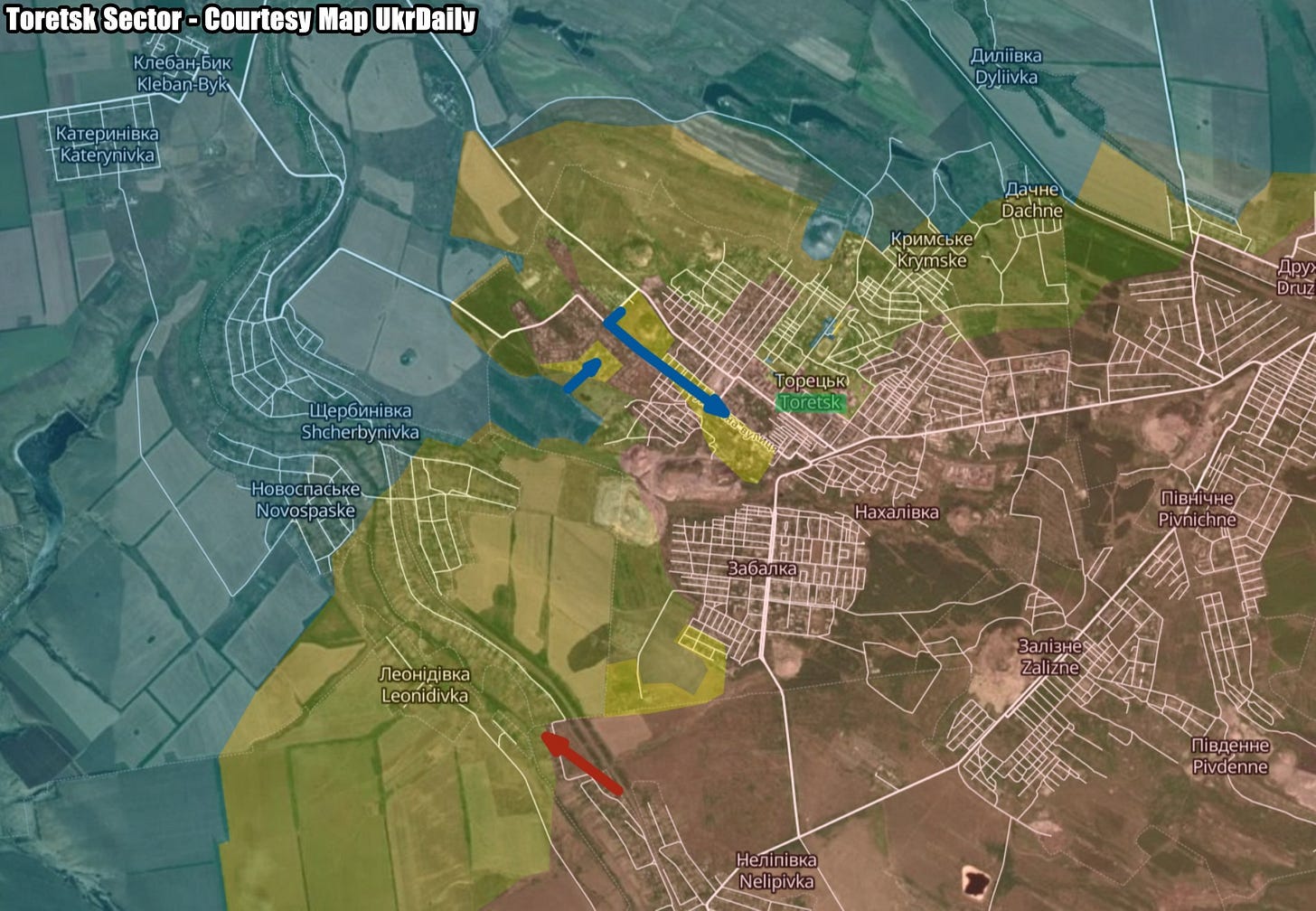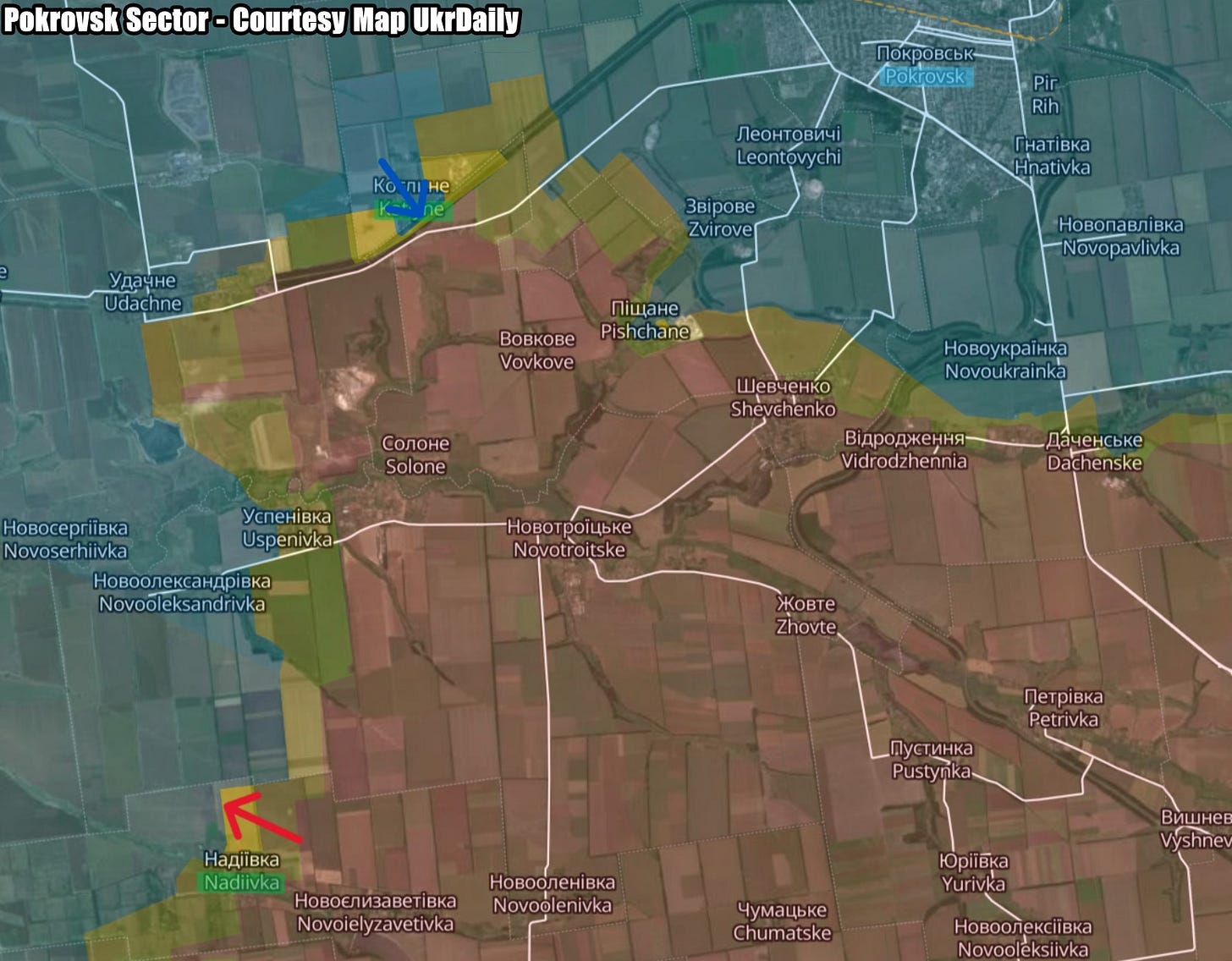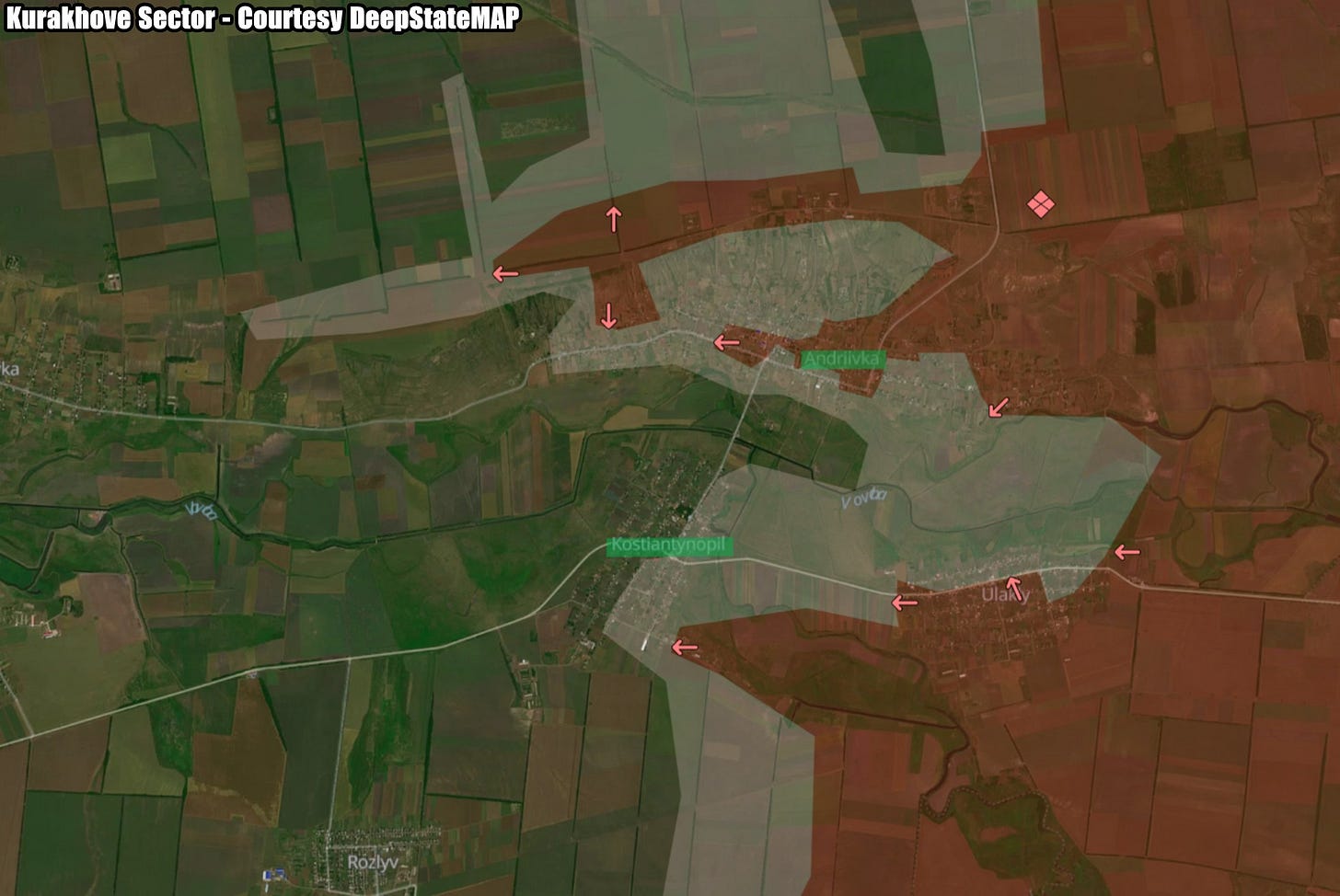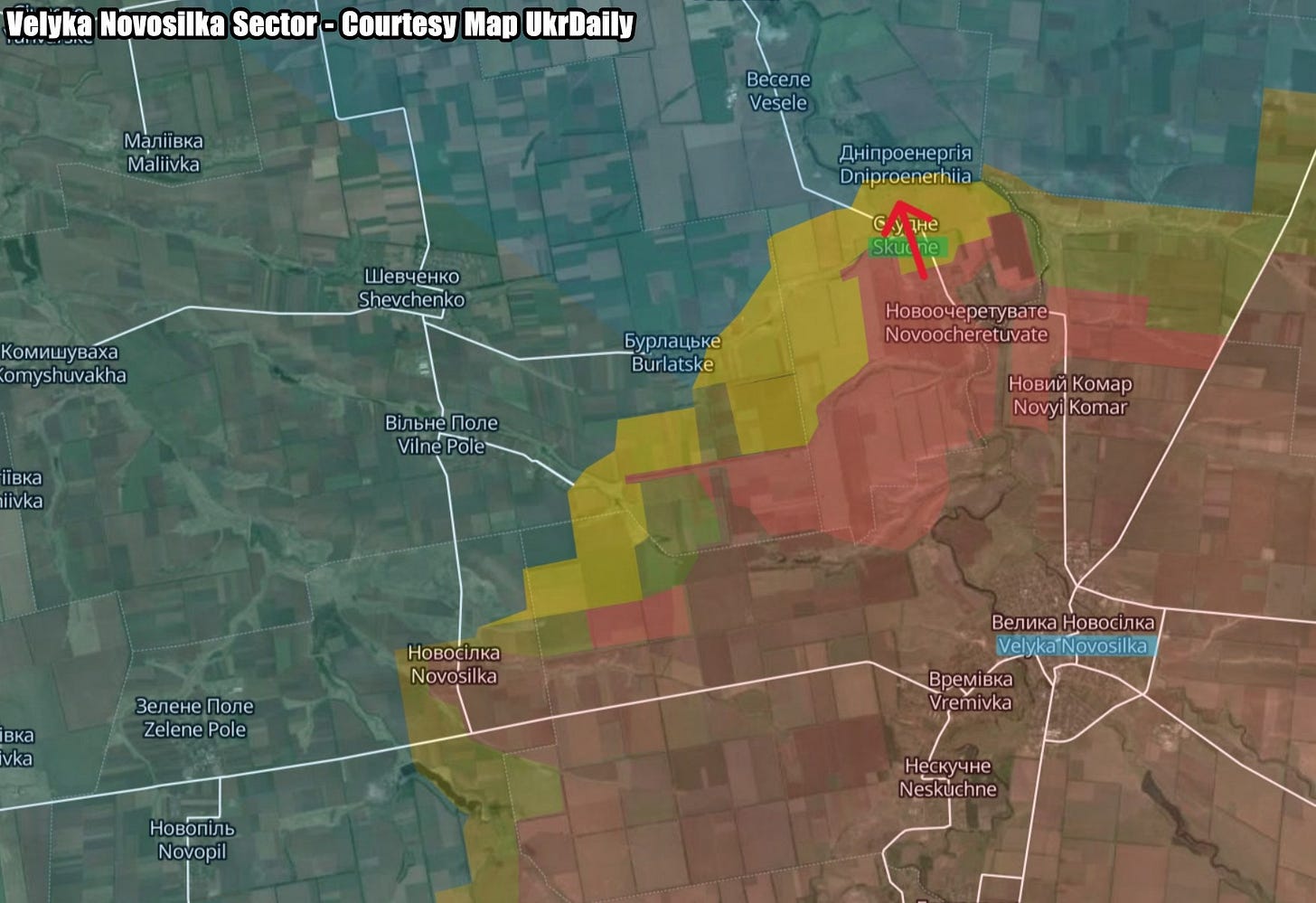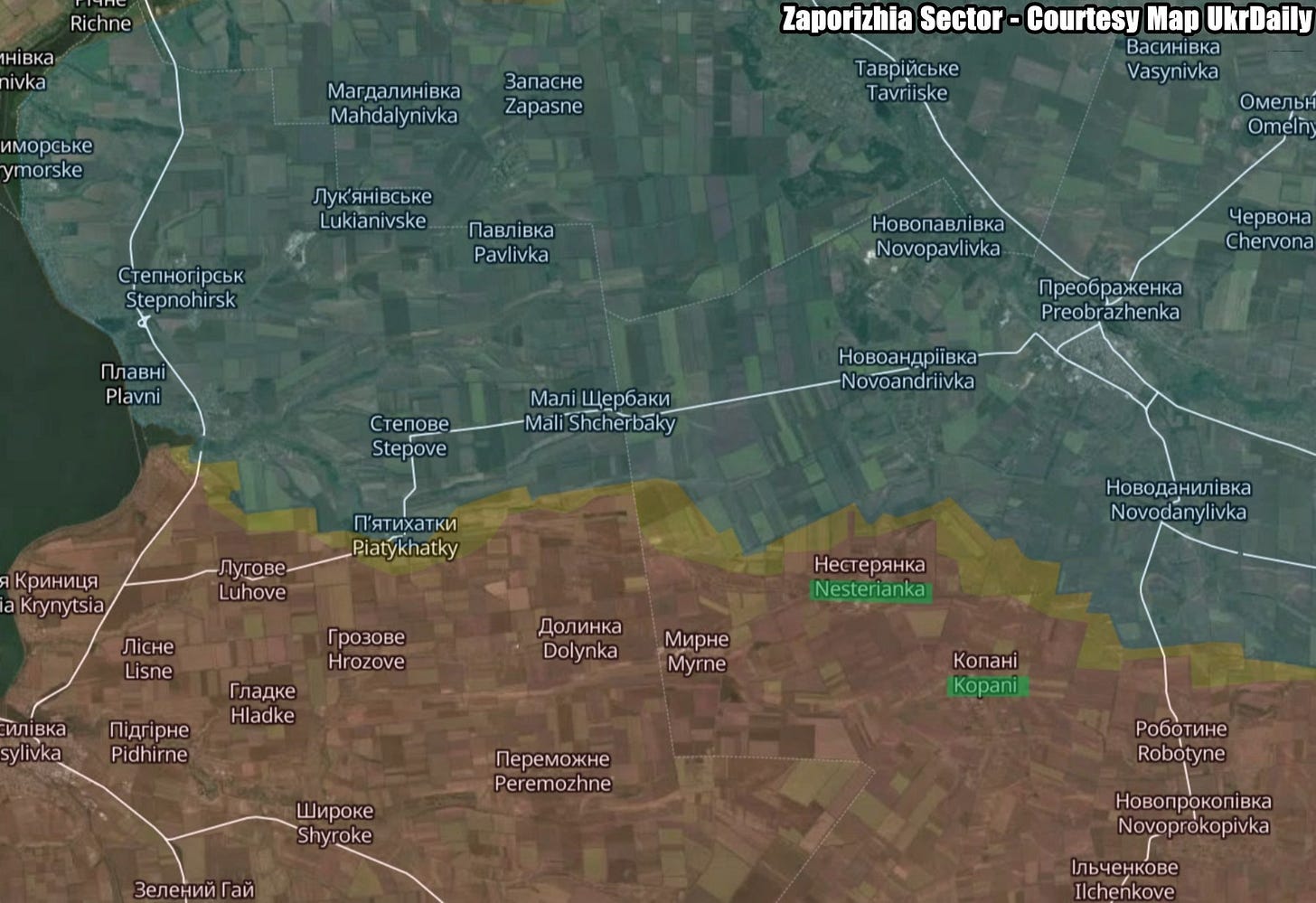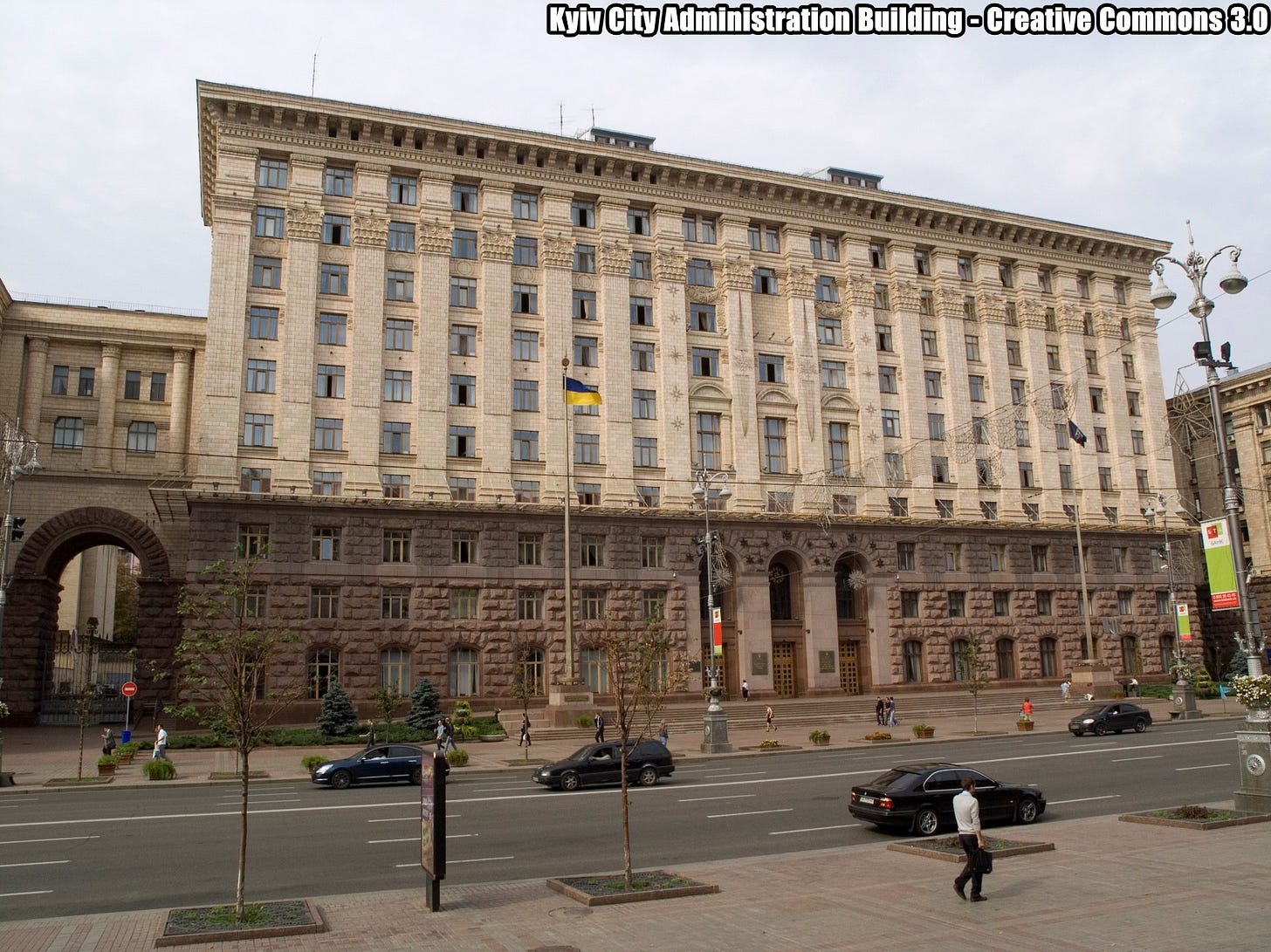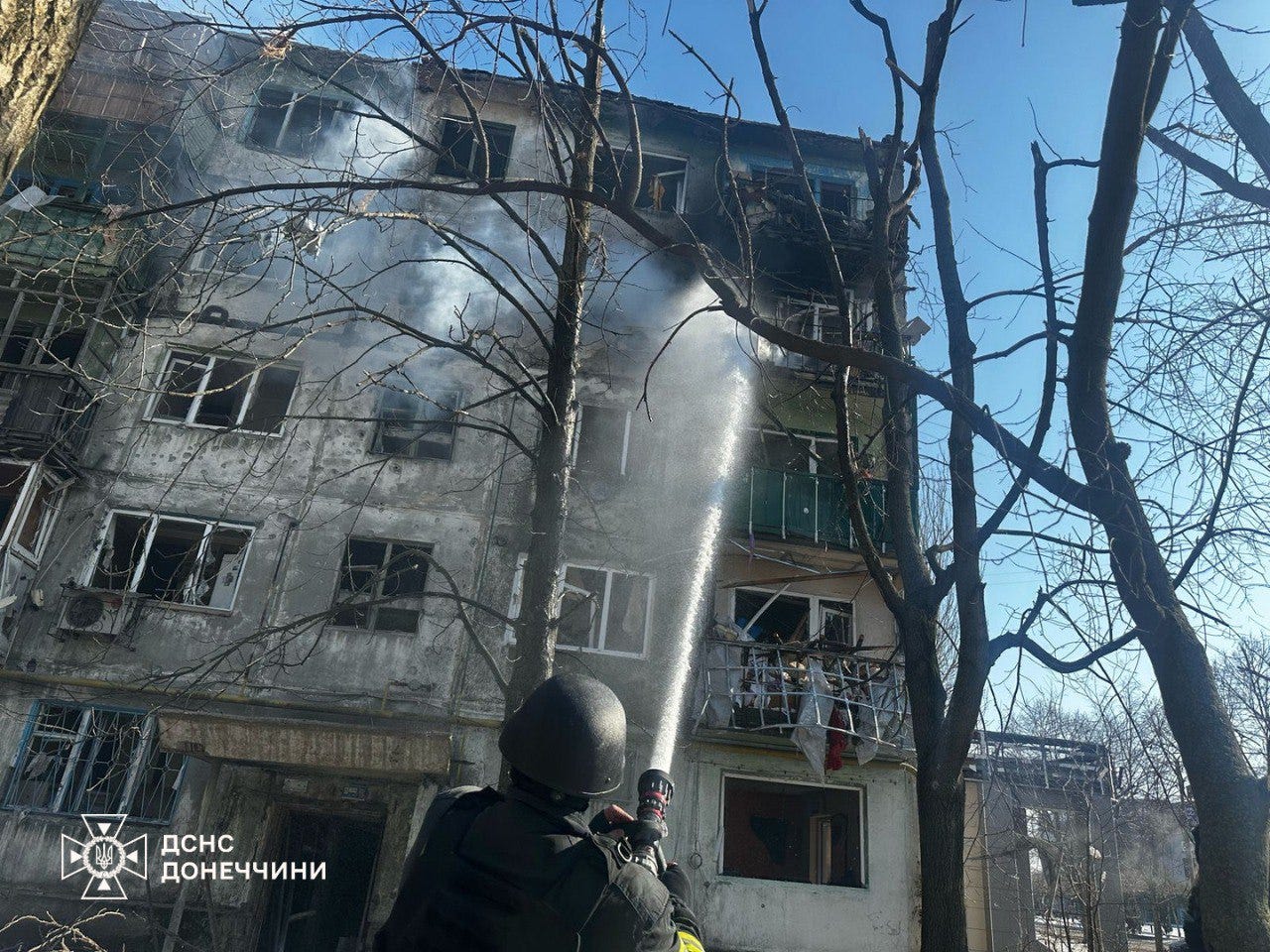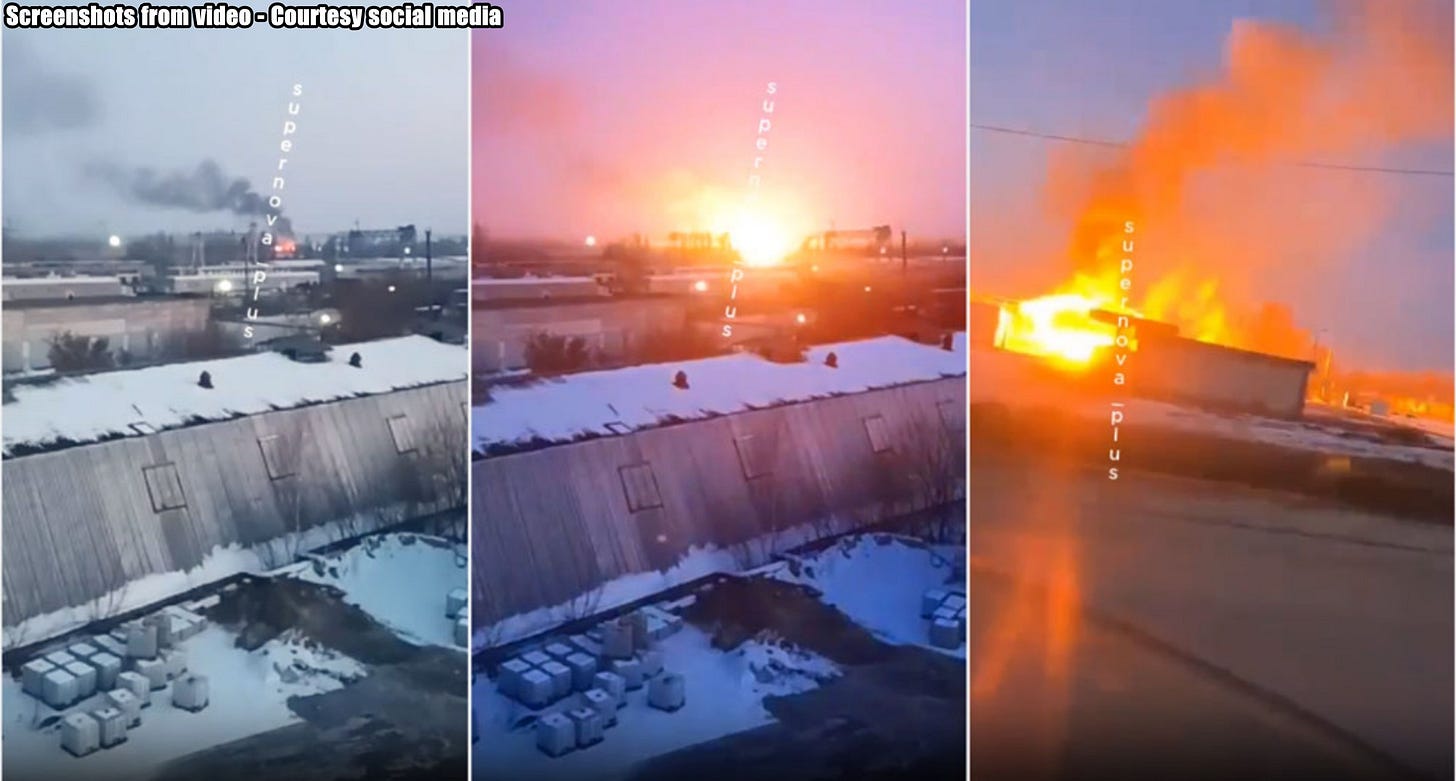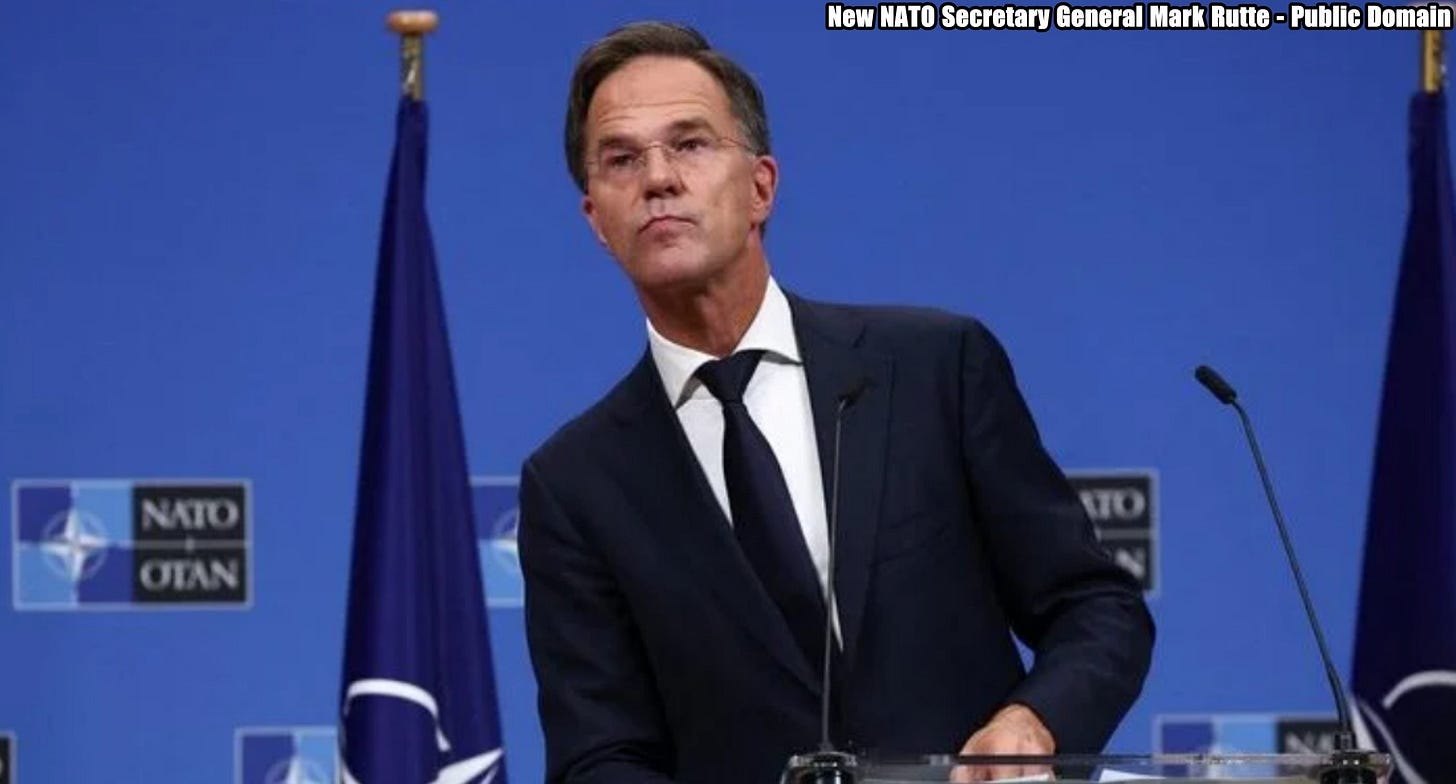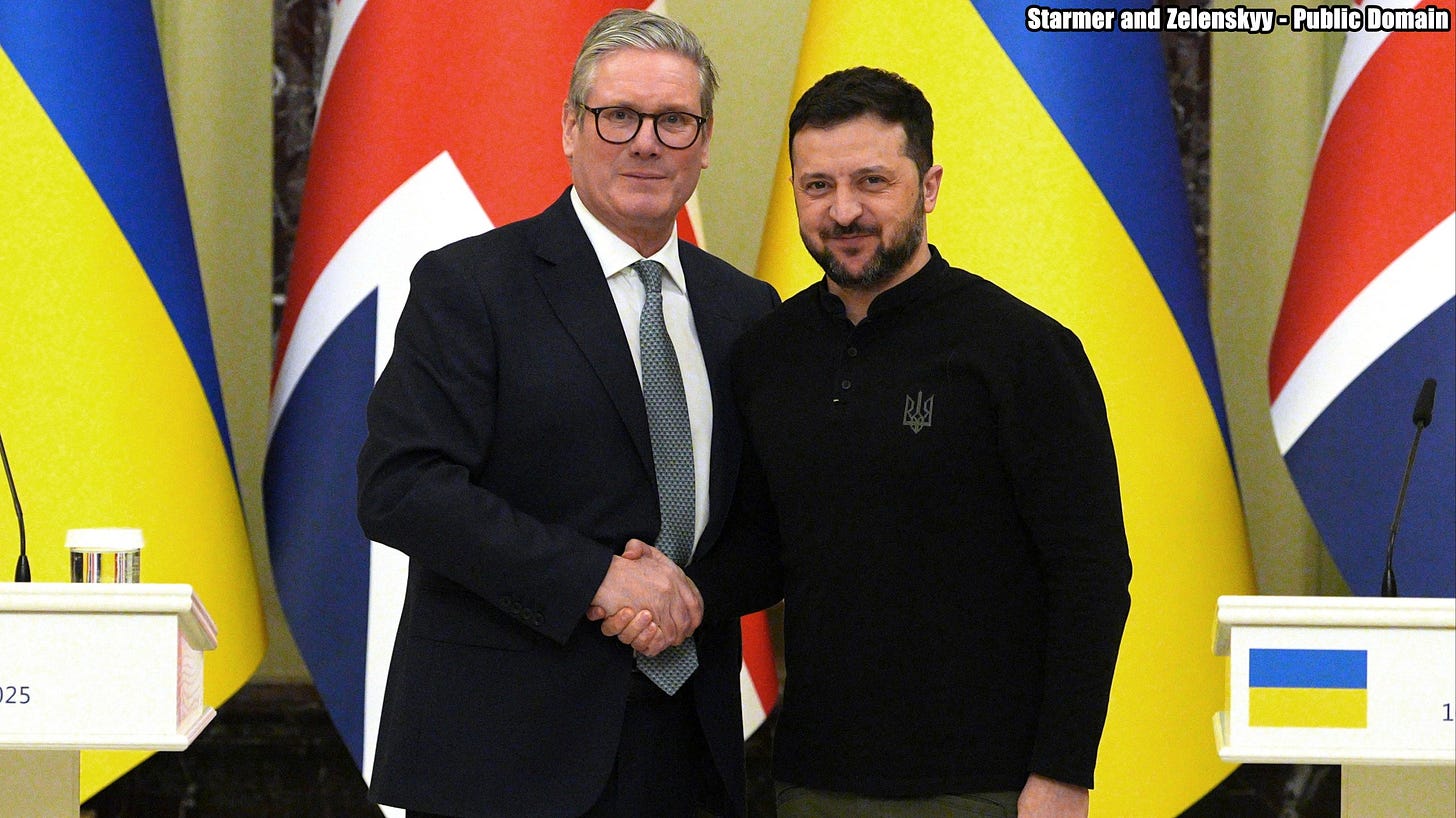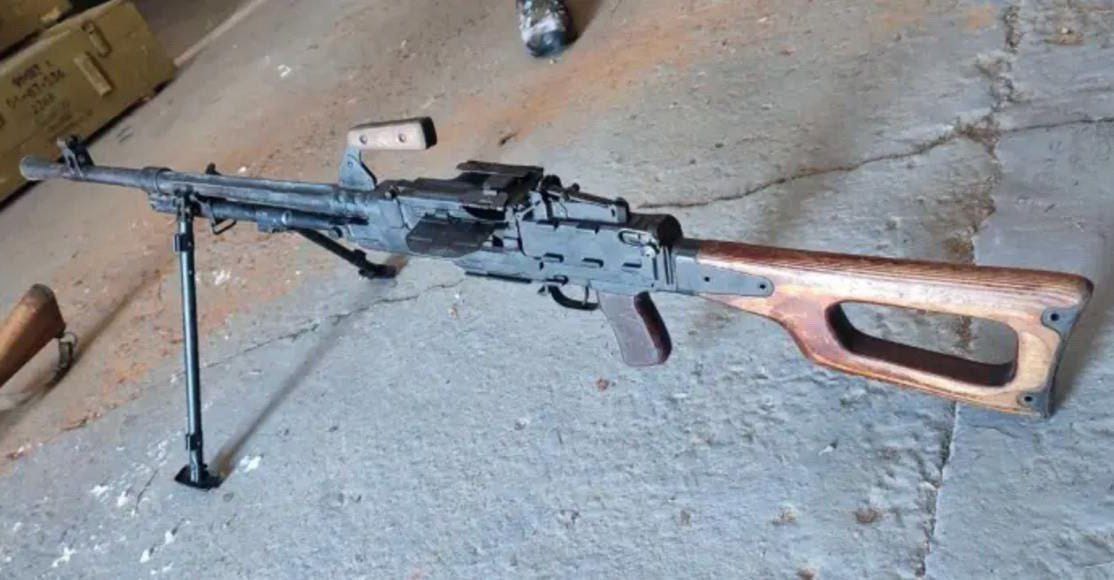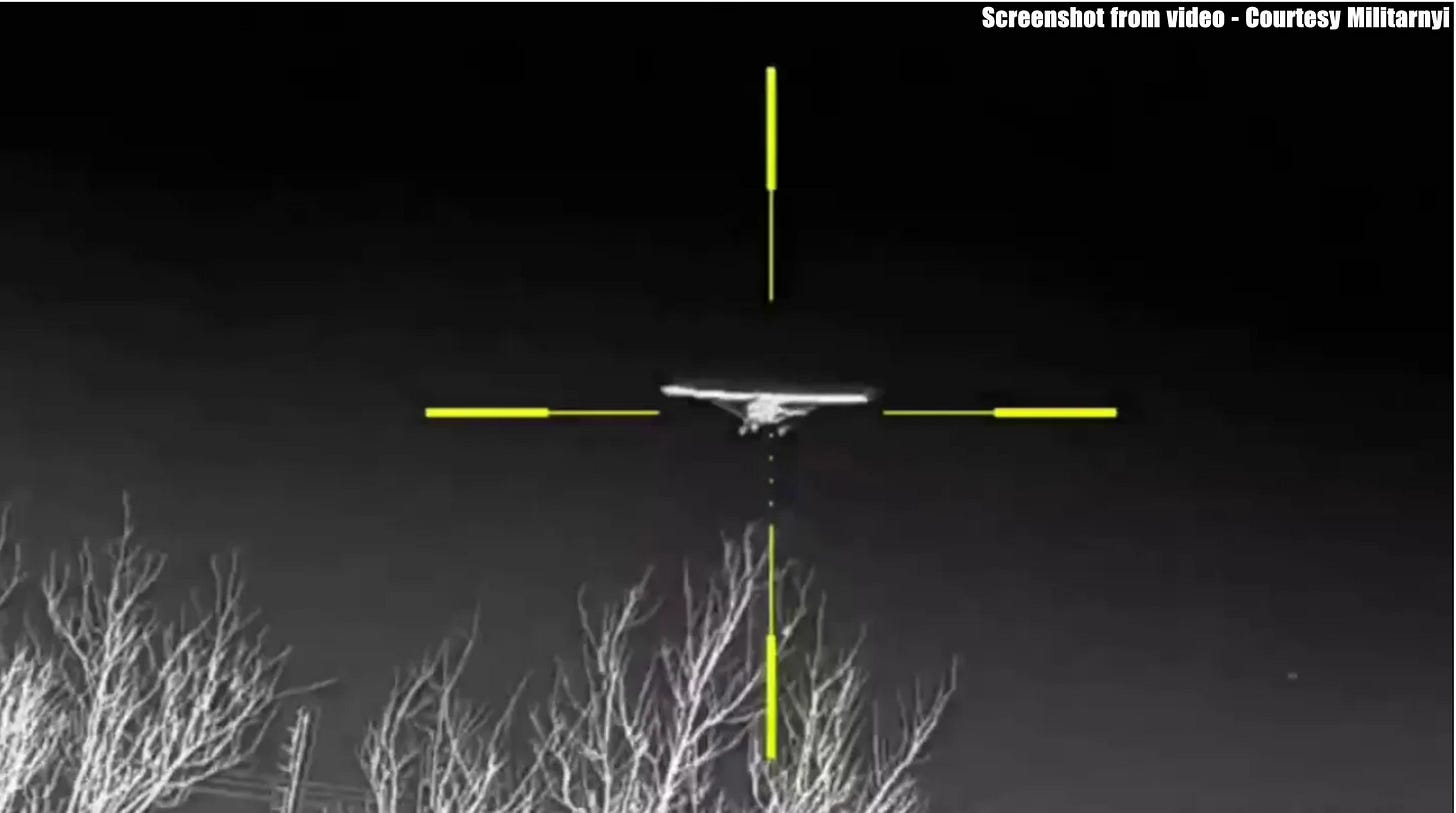Slava Ukraini! In early 2022 I began a Telegram channel aggregating news from a number of sources daily on the war in Ukraine. In June 2023 I began providing a daily draft for the Ukraine War Brief Podcast collecting news from over 70 sources daily, which formed the basis of the script. While the Podcast no longer exists I have continued to make this Brief available for my followers here on Substack for those who wish to keep up with the news from the war.
All the latest news on the Russo-Ukraine War 6 days per week
ALONG THE CONTACT LINE
GSAFU Morning Report
The General Staff of the Armed Forces of Ukraine in its Operational Information update at 08:00 on Feb 27 stated that day 1101 of the full-scale invasion of the Russian Federation against Ukraine had begun.
The situation on the line of combat remains tense in some sectors. Ukrainian defenders continue to actively counteract the Russian aggressor, causing them significant losses in personnel, equipment and technology. Exhausting the enemy along the entire front line and continuing to disrupt the plans of Russian occupiers to advance deeper into the territory of Ukraine.
During the past day, 128 combat engagements took place.
Over the past 24 hours, the enemy carried out 1 missile strike, 91 air strikes, used 2,865 drones and fired approximately 5,000 artillery shells across the positions of Ukrainian forces and civilians.
Air Force Daily Report
107 ENEMY UAVS SHOT DOWN, 97 DRONES FAILED TO REACH THEIR TARGETS (LOCATIONALLY LOST)
➖➖➖➖➖➖➖➖➖
On the night of Feb 28, 2025 (from 7:00 p.m. on February 27), the enemy attacked with 208 Shahed attack UAVs and simulator drones of various types from the directions: Orel, Bryansk, Kursk, Millerovo, Shatalovo, Primorsko-Akhtarsk - Russia.
The air attack was repelled by aviation, anti-aircraft missile troops, electronic warfare units, and mobile fire groups of the Air Force and Defense Forces of Ukraine.
As of 09:00, it has been confirmed that 107 Shahed attack UAVs and drones of other types have been shot down in Kharkiv, Poltava, Sumy, Kyiv, Chernihiv, Cherkasy, Vinnytsia, Zhytomyr, Kirovohrad, Dnipropetrovsk, Zaporizhia, Kherson and Mykolaiv regions.
97 enemy drones-simulators - lost in location (without negative consequences).
As a result of the enemy attack, the Kharkiv, Sumy, Mykolaiv, and Zaporizhia regions suffered.
Combat Operations in the Kursk Sector, Russian Federation
The Institute for the Study of War (ISW), a US based think tank, in its Feb 27 Russian Offensive Campaign Assessment reported that Russian forces continued attacking in Kursk Oblast on Feb 27 but did not make any confirmed advances. Fighting continued northwest of Sudzha near Staraya Sorochina and north of Sudzha near Malaya Loknya.
A Ukrainian platoon commander operating in Kursk Oblast stated on February 27 that Russian forces in Kursk Oblast frequently attack in in small infantry groups. The commander noted that North Korean forces usually attack in groups of 10 to 15 personnel, while Russian forces usually attack in smaller groups of two to three personnel. The commander added that North Korean forces previously attacked in groups of up to 50 people.
The Khortytsia operational-strategic group
(Responsible for the northeastern part of Ukraine. )
Toretsk Sector: Ukrainian forces recently advanced in the Toretsk direction. Russian forces conducted offensive operations near Toretsk itself and north of Toretsk near Krymske on Feb 26 and 27.
Geolocated footage published on Feb 26 indicates that Ukrainian forces recently advanced in southwestern Toretsk.
The Tavria operational-strategic group
(Responsible for the central-eastern and southeastern part of Ukraine.)
Pokrovsk Sector : Ukrainian and Russian forces recently advanced in the Pokrovsk direction. Russian forces continued attacking northeast of Pokrovsk near Tarasivka and Vodyane Druhe; east of Pokrovsk near Novotoretske, Myrolyubivka, and Promin; southeast of Pokrovsk near Lysivka; south of Pokrovsk near Dachenske; and southwest of Pokrovsk near Zvirove, Leontovychi (formerly Pershe Travyna), Kotlyne, Udachne, Nadiivka, Uspenivka, Pishchane, Preobrazhenka, Novooleksandrivka, and Zaporizhzhia on Feb 26 and 27. Russian milbloggers claimed that Ukrainian forces counterattacked near Kotlyne, Uspenivka, and Udachne.
Geolocated footage published on Feb 25 indicates that Ukrainian forces recently advanced east of Kotlyne.
Geolocated footage published on Feb 26 indicates that Russian forces recently advanced west of Nadiivka.
Kurakhove Sector: Russian forces recently advanced in the Kurakhove direction. Russian forces conducted offensive operations west of Kurakhove near Kostyantynopil and Andriivka and southwest of Kurakhove near Rozdolne on Feb 26 and 27.
Assessed Russian advances: The Ukrainian General Staff published a map on Feb 27 indicating that Russian forces advanced south of Andriivka and in southeastern Kostyantynopil.
Velyka Novosilka Sector: Russian forces recently advanced near Velyka Novosilka. Russian forces conducted offensive operations northwest of Velyka Novosilka near Burlatske and Pryvilne and toward Shevchenko, north of Velyka Novosilka near Dniproenerhiya, and southwest of Velyka Novosilka near Novopil on Feb 26 and 27.
Geolocated footage published on Feb 26 shows Ukrainian forces striking Russian forces north of Skudne, indicating that Russian forces recently seized the settlement.
Zaporizhia Sector: Russian forces continued offensive operations in western Zaporizhia Oblast on Feb 27 but did not make any confirmed advances. Russian forces conducted offensive operations northeast of Robotyne toward Charivne and northwest of Robotyne near Stepove, Kamyanske, Novoandriivka, and Pyatykhatky on Feb 26 and 27.
Ukrainian forces recently struck two Russian command posts near the frontline in the Zaporizhia direction. The Ukrainian General Staff reported that Ukrainian forces struck a command observation point and drone launch site of the Russian 1429th Motorized Rifle Regiment (58th CAA, SMD) near Kopani (northwest of Robotyne) on February 25.[68] The Ukrainian General Staff reported that Ukrainian forces also struck a drone command post of the 503rd Motorized Rifle Regiment (19th Motorized Rifle Division, 58th CAA, SMD) in Nesteryanka (northwest of Robotyne) on Feb 26.
The Odesa operational-strategic group
(Responsible for Kherson, Qırım, (also known as Crimea) and the Black Sea.)
There have been no major changes to the combat environment since our last report.
TEMPORARILY OCCUPIED TERRITORIES
Ukrainian forces destroy Russian thermobaric ammunition depot in Donetsk Oblast.
On the night of Feb 28, the Defense Forces of Ukraine destroyed a storage warehouse of thermobaric ammunition of Russian invaders in the temporarily occupied territory of the Donetsk region, in the Selidovoye district. The GSAFU reported on Feb 28.
In addition, three more important objects of the Russian occupiers were impressed. In particular, to the Ilsk Oil Refinery Plant (Krasnodar Region of Russia), which is involved in the provision of the Russian occupation army. The results of the impressions are being clarified.
THE HOME FRONT
Manufacturer of NASAMS air defence system plans to set up plant in Ukraine.
The Norwegian defence company Kongsberg Defence & Aerospace, which produces ammunition for NASAMS air defence systems, plans to set up a joint production facility in Ukraine. Ukrainska Pravda reported citing Eirik Lie, President of Kongsberg Defence & Aerospace, in an interview with Euractiv.
“We are now establishing a company in Ukraine. We are in close discussion with industry in Ukraine to establish a joint venture. The first priority is to increase missile production for our air defence system in Ukraine, based on Ukrainian technology. We are talking about the mass production of missiles, meaning hundreds. We are looking at establishing the joint ventures within months."
The company's president said that Kongsberg wants to use the power of Ukrainian industry in the long term after the war.
"Ukraine can be part of the supply chain providing missiles for air defence systems."
Mayor announces dismissals of top Kyiv administration officials over corruption accusations.
Kyiv Mayor Vitali Klitschko announced on Feb. 28 that Petro Olenych, the deputy head of the Kyiv City Administration, and several other officials embroiled in a corruption probe would be dismissed, the Kyiv Independent reported on Feb 28.
A day earlier, Ukraine's National Anti-Corruption Bureau (NABU) and the Specialized Anti-Corruption Prosecutor's Office (SAPO) released recordings of conversations of Kyiv officials taken as part of a sting operation aimed at exposing functionaries involved in corruption in the city's land and budget sectors.
Yurii Leonov, deputy director of the city's special housing fund, and Oleksii Mushta, deputy head of an urban infrastructure management agency, will also be dismissed. Kyiv City Council member and head of the land commission Mykhailo Terentiiev is also to resign, according to Klitschko's statement.
"There will be a reorganization in urban planning and land relations. And not only in these areas. As for the high-profile 'land case,' the city provides law enforcement with all requested documents and facilitates the investigation," Klitschko said.
The suspects reportedly found suitable land plots and registered ownership of buildings that never existed there in the name of controlled entities, according to the investigation. Subsequently, the applications for ownership for the maintenance of these structures were submitted to the city council, which allegedly helped them avoid a fair tender.
On Feb. 7, the High Anti-Corruption Court imposed pre-trial restraints on the Kyiv officials suspected in the case. The court remanded Olenych in custody for two months, until April 6, with the possibility of posting Hr 15 million (nearly $360,000) bail. Olenych was released from the pre-trial detention center on bail on Feb. 21.
Olenych said that his family had borrowed the money for bail and that he would file a motion for suspension from office during the investigation.
On Feb. 10, NABU said the alleged head of the corruption scheme, former Kyiv City Council member Denys Komarnytskyi, was put on the wanted list in Ukraine. Ten people were charged in the case, seven of whom have been detained.
Russian attacks against Ukraine kill 3, injure 20 over past day.
Russian attacks against Ukraine killed three people and injured 20 others over the past day, regional authorities said on Feb. 28.
A Russian drone strike on the city of Zaporizhzhia damaged three high-rise buildings and five houses, according to Governor Ivan Fedorov. Three apartments were destroyed by fire. The attack injured an 82-year-old woman, the governor said.
Three people were killed in the cities of Pokrovsk and Kostiantynivka as well as in the village of Torske in Donetsk Oblast, Governor Vadym Filashkin said. Seven more people were injured in the region over the past day.
A Russian drone attack on the city of Balakliia in Kharkiv Oblast destroyed an apartment building, injuring two men and a woman, Governor Oleh Syniehubov said.
Russian drones also targeted residential areas, an enterprise, and a power grid facility near Kharkiv overnight, damaging around 20 residential buildings. A woman and a man suffered injuries, according to the governor.
In Kherson Oblast, Russian forces targeted 36 settlements, including the regional center of Kherson. Seven people were injured, Governor Oleksandr Prokudin reported.
RUSSIAN WORLD
Fire, secondary detonations reported at Vektor plant in Russia’s Kursk Oblast.
Russia’s Defense Ministry claims that dozens of Ukrainian drones attacked various regions across Russia and were allegedly shot down overnight on 28 February, with social media reports showing a significant fire in Kurchatov, Kursk Oblast, Euromaidan Press reported citing Ukrainian Telegram channels sharing footage of the blaze, claiming it occurred at a manufacturing facility.
The Russian MoD has traditionally avoided acknowledging direct hits, instead claiming all 22 Ukrainian drones were intercepted or destroyed, eight over Oryol Oblast, seven over Kursk Oblast, four over Bryansk Oblast, two over Krasnodar Krai, and one over Smolensk Oblast.
On the evening of Feb 27, Ukrainian Telegram group Supernova+ published videos showing a fire in Russia’s Kurchatov district, Kursk Oblast. The channel claimed a Russian ammunition depot was burning, with secondary detonations visible in the footage.
INTERNATIONAL NEWS
Rutte announces NATO allies will provide Ukraine with billions more in aid.
NATO Secretary General Mark Rutte has announced that alliance members are ramping up their defense investments and preparing additional financial support for Ukraine. His remarks came after a phone call with U.S. President Donald Trump on Feb. 27.
"Great to talk with Donald Trump. US & NATO are getting stronger. NATO Allies are moving quickly to invest more in defense. Big increases announced & others to follow," Rutte said in a post on Twitter.
He also emphasized NATO's continued support for Ukraine, adding that "on Ukraine, Allies are preparing billions more in aid and contributions to security guarantees."
Rutte’s comments signal a concerted effort by NATO members to bolster collective defense and sustain military assistance to Ukraine as the war with Russia continues.
Rutte previously said that Europe is prepared to take the lead in providing security guarantees for Ukraine. His statement, posted on X on Feb. 17, followed a Paris summit hosted by French President Emmanuel Macron, where European leaders gathered ahead of upcoming U.S.-Russia talks on ending the war.
"Europe is ready and willing to step up. To lead in providing security guarantees for Ukraine. Ready and willing to invest a lot more in our security. The details will need to be decided, but the commitment is clear," he added.
Europe cannot ensure implementation of a Ukraine peace agreement if it is not included in negotiations.
Kaja Kallas, EU High Representative for Foreign Affairs and Security Policy, has stated that Europeans will not be able to help implement a ceasefire agreement in the three-year full-scale war if US President Donald Trump does not include them in the negotiation process, Censor.NET reported citing Kallas’ interview with AFP during a visit to Washington.
Trump, who is expected to sign a minerals deal with Ukrainian President Volodymyr Zelenskyy on Friday, refused to provide Ukraine with American security guarantees and said it was a matter for the Europeans.
Kallas said that in any deal on Ukraine, "the Europeans have to be on board."
"We need to be part of those discussions. I think without it, we can’t provide anything," she said.
Kallas acknowledged that Europe "will not be able to fill the gap that America is leaving" but "the world is watching to see" what more Europe can do.
"I feel that we need to also increase our geopolitical power. If America is turning inwards, Europe is turning outwards," the EU’s chief diplomat added.
Starmer invites Zelenskyy, other leaders to summit on Ukraine, security on March 2.
U.K. Prime Minister Keir Starmer invited over a dozen European leaders, including President Volodymyr Zelensky, to a summit on Ukraine and security on March 2 in London, the Kyiv Independent reported on Feb. 28, citing Starmer's office.
The news comes as Starmer met U.S. President Donald Trump in the White House the day earlier to discuss the Western allies' role in securing a lasting peace in Ukraine.
Among those invited to the summit are leaders of France, Germany, Denmark, Italy, and Turkey. Following Starmer's meeting with Trump, the leaders of the Netherlands, Norway, Poland, Spain, Finland, Sweden, Czechia, and Romania were added to the list of invitees.
NATO chief Mark Rutte and EU leaders Ursula von der Leyen and Antonio Costa are also expected to join.
"The prime minister will use the summit to drive forward European action on Ukraine – signaling our collective unwavering support to securing a just and enduring peace, and a lasting deal, that ensures Ukraine's future sovereignty and security," his office said.
Before the summit, Starmer will have a call with representatives of the Baltic states in the morning, after which he will meet with Zelensky in Downing Street to discuss the war against Russia, according to the office.
Prior to the summit, Starmer will hold one-on-one talks with Italian Prime Minister Giorgia Meloni. During the meeting, they will focus on "strengthening Ukraine's position now — including ongoing military support and increased economic pressure on Russia," AFP reported.
Trump has been pushing Ukraine and Russia to quickly negotiate a ceasefire, though no formal peace talks involving both Kyiv and Moscow have taken place. U.S. officials have held direct talks with Russian delegates in recent days, without Ukraine's participation.
MILITARY & TECH
An apparent shortage of machine guns forces Russia to adopt an experimental 70 year old model.
Russia's shortage of machine guns has been evident for quite some time. Despite the so-called "legendary Kalashnikov," russian troops have begun receiving rather unusual models. Notably, in November last year, North Korean Type 73 machine guns were documented in enemy hands, and now, Soviet-era TKB-521s from the late 1950s have appeared on the battlefield, Defense Express reports.
One of Ukraine’s Defense Forces units captured a TKB-521 as a trophy, directly confirming that the enemy has been using these machine guns for some time. Until now, the TKB-521 could primarily be seen in the exhibition of the Tula Museum of Weapons.
The TKB-521, also known as EPN (after its designer—“Ediny Pulemyot Nikitina”), was developed in 1953 at the Tula-based TsKB-14. Around 1,000 units were produced for testing. However, it ultimately lost the competition to the PK—the Kalashnikov machine gun, which entered service in 1959, relegating the TKB-521 to storage.
The reason for the PK’s victory was that the TKB-521 was "born in agony." By 1961, when the decision to adopt a new machine gun was made, it had already undergone eight years of development. Kalashnikov himself wrote that the slow pace of the TKB-521’s designers was the main reason for their failure. Additionally, the PK's production was facilitated by existing technological equipment and the unification of several components with the AK.
The TKB-521 had a rate of fire of 650–700 rounds per minute and weighed approximately 9 kg, making it nearly identical to the PK in key parameters. However, during final testing, the TKB-521 demonstrated better resistance to dust compared to the Kalashnikov machine gun but was less reliable when exposed to moisture. It also had advantages in loading and unloading but was inferior in assembly, disassembly, and maintenance.
One distinctive feature of the TKB-521 is the cutoff of propellant gases after striking the piston, along with a check valve that blocks the gas tube outlet. This required the production of components with extremely strict tolerances and nearly individual fitting.
Another notable feature is its direct cartridge feeding mechanism, which inserts rounds from the belt straight into the chamber. This differs from the PK, where cartridges are first pulled back and down from the belt before being chambered. As a result, the TKB-521 required a special belt link design, meaning it used proprietary belts incompatible with existing SGM and RP-46 machine guns. The PK did not suffer from these limitations.
Ukraine uses light unmanned aircraft for bombing raids
Ukrainian forces have begun using light unmanned aircraft armed with aerial bombs to strike Russian military positions along the frontline, Militarnyi reports includes footage of one such attack.
The publication states that long-range strike drones, modified from civilian light aircraft, are now being used for night raids and bomb drops on Russian positions.
Thermal imaging footage recorded by Russian forces shows a low-flying aircraft passing over enemy positions before an explosion is heard, indicating a successful bomb drop.
Flying at extremely low altitudes, these aircraft evade radar detection and missile defense systems, though they remain vulnerable to anti-aircraft artillery fire. In the released footage, the drone successfully evades small arms fire and exits the attack zone.
Ukrainian forces have been using such drones for strategic strikes inside Russian territory for months. Initially employed as kamikaze drones, they have evolved into reusable bombers capable of sustained operations.
In late January, one such drone dropped a 250-kilogram bomb on the Novozvybkov oil pumping station in Russia’s Bryansk region. Reports also suggest the use of lighter munitions, including the OFAB-100-120 aerial bomb.
For precision strikes, these drones are equipped with an electro-optical targeting system featuring day and night vision capabilities.
The 14th Regiment of Ukraine’s Unmanned Systems Forces, known for its deep-strike operations inside Russian territory, is among the units operating these modified aircraft.
The emergence of these unmanned bombers highlights Ukraine’s evolving aerial warfare tactics, increasing pressure on Russian positions and strategic infrastructure.
That’s it for today’s Brief folks if you would like to keep up with events in Ukraine daily please consider subscribing, it’s free!


